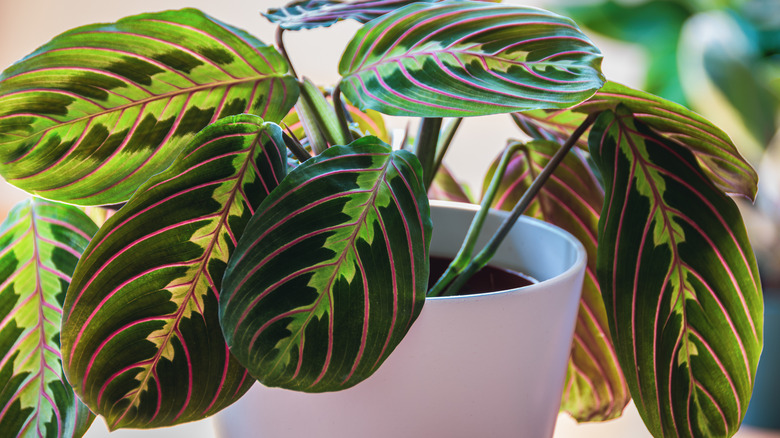The Prayer Plant's Most Common Problems And How To Fix Them
The prayer plant, Maranta leuconeura, is a popular houseplant known for its stunning foliage and ability to bring beauty to indoor spaces. It is also among the indoor plants that can grow in water indefinitely. However, like any plant, it can experience issues that affect its overall health and appearance. So, to get the most out of your prayer plant, you'll want to be able to identify their most common problems and how to fix them.
You may notice that your plant's leaves are curling. Maybe they have dry, crispy edges on the edges of their leaves. Perhaps you're wondering why the leaves on your plant are so tiny or why it's so leggy. These are all indications that something is wrong with your plant and that something in its treatment or environment needs adjusting. There could be a singular issue or several simultaneous things contributing to your plant's condition. But most of these issues can be easily solved without having to spend any money. Here's how you can easily improve the health of your ailing prayer plant.
How to find your prayer plant problems
As tropical plants, prayer plants thrive in humid environments. If the air around your plant is too dry, the leaves may curl due to the lack of moisture. You can increase humidity by misting the leaves regularly. You may also want to consider placing your plant on top of a pebble tray filled with water or placing a humidifier nearby. If just the tip of your prayer plant's leaves are dried out and "crispy," that could be an indication that you are giving it hard water that has too high of a mineral content. Try watering it with distilled or filtered water instead.
Prayer plant leaves should be wide, oval in shape, and about 4 to 8 inches long. If your plant's leaves are smaller than this, it could mean that it's not getting the correct amount of light needed to flourish. Prayer plants don't like direct sunlight. They do best in shade or low light. The remedy for a thin and "leggy" plant, one that grows very tall but with sparse leaves, is to propagate it. Cut off a leaf or multiple leaves connected to a stem from your plant below its node at the base of the stem and place it in water. Change the water every other day until the root is at least 3 inches long. Then, replant your cutting in the original pot with the rest of your plant to help it fill out and get nice and bushy.
